































































Embarking on the open water is an exhilarating experience, flled with the promise of adventure and relaxation. Whether you’re a seasoned sailor or a weekend cruiser, protecting your vessel with proper insurance is not just a choice—it’s a necessity. Explore the reasons why every boat owner should prioritize boat insurance for a worry-free voyage.


The open water can be unpredictable, with unexpected storms, collisions, or other potential accidents. Boat insurance can give you fnancial protection if there is damage to your vessel, providing coverage for repairs or replacement.
Accidents on the water can result in damage to other boats, docks, or even injuries to passengers. Boat insurance offers liability coverage, which can pay for damages or injuries you’re liable for while boating, up to specifed limits, and lawsuit costs if you’re sued. This includes damage you cause to another watercraft or if someone on or near your boat is injured and you’re found to be legally responsible.
Unfortunately, boat theft and vandalism are realities that boat owners face. Boat insurance has comprehensive and collision coverage that can protect you against events outside of your control, including theft and vandalism.
Accidents on the water may lead to injuries for you or your passengers. Boat insurance offers a range of optional medical payments coverage limits, helping to cover medical expenses if you are in an accident or someone is hurt on your boat, regardless of fault.
If you fnanced the purchase of your boat, most lenders require insurance coverage to protect their investment. Having boat insurance not only fulflls these requirements but also gives you peace of mind knowing that your fnancial interests are safeguarded.
Some water municipalities and marinas may require proof of insurance for docking or accessing certain areas. Boat insurance allows you the fexibility to explore different destinations without worrying about entry restrictions.
Emergency towing and assistance
Progressive boat insurance can include optional Sign & Glide® On-Water Towing coverage. If your boat is disabled or breaks down on the water, Sign & Glide® pays for on-water towing, jump starts, soft un-groundings, and fuel delivery.
Wreckage removal
If your boat sinks, Progressive boat insurance will cover the cost of removing your boat from the water (if removal is legally required).
Investing in boat insurance is not just about protecting a valuable asset; it’s about safeguarding the memories, experiences, and joy that come with your on-water adventures. Don’t let unforeseen circumstances disrupt your journey—navigate with confdence, knowing that Progressive boat insurance has you covered. Ensure a smooth and worry-free voyage, because when it comes to your boat, peace of mind is the ultimate luxury.
Scan to get a quote in as little as 4 minutes
learn more.


























The quest to find the ultimate men’s watch has traditionally been a difficult one in the world of fashion. A timepiece with the perfect look and functionality has long been the goal of both watch designers and enthusiasts alike.
The Renegade Blue Chronograph Men’s Watch is the perfect combination of style and function. With a sleek design that features a bold blue dial, rose gold hands and hour markers, and a durable sports silicone band, this timepiece will instantly elevate any outfit.
The three sub-dials provide a precise timekeeping function. The sports silicone band is durable yet comfortable, providing a secure fit that won’t slide around on your wrist. The band is also easy to clean and maintain, making it perfect for everyday wear. The watch’s 30 Metre Water Resistance rating ensures that it has you covered whatever the occasion.
The Renegade Blue is also built to last, with a sturdy stainless steel caseback and exquisitely detailed bezel. The watch is powered by a super reliable quartz movement, which is covered by our incredible 5 Year Movement Warranty - ensuring accurate timekeeping for many years to come!
At the amazingly low price of just $99 plus S&H, this watch is an absolute steal. Don’t miss out on the chance to own the Renegade Blue and Rose Gold Chronograph Men’s Watch - order yours today!





By Dr. Benjamin Cole


Tarpon (Megalops atlanticus), known as “silver kings,” are renowned for their acrobatic leaps and strength, making them a top target for anglers. However, their fascinating migration patterns also play a crucial role in maintaining marine ecosystems.
Tarpon migration is largely driven by the need for feeding and reproduction. Tese highly
migratory fsh can travel thousands of miles, infuenced by water temperature, food availability, and spawning needs. Preferring temperatures above 72°F (22°C), tarpon move south during colder months, seeking warmer waters.
the U.S. Atlantic coast, they travel from Virginia to Florida and the Caribbean, while in the Gulf, they move from Texas and Louisiana to Mexico. Teir northward migration begins in late spring, driven by rising temperatures and abundant food. By summer, tarpon reach as far as Virginia, signaling the start of fshing season. As fall sets in, they return south to warmer wintering grounds.
A key driver of tarpon migration is spawning, typically occurring between May and September in ofshore areas with strong currents. Afer spawning, larvae are carried into estuarine environments like mangroves and marshes, crucial nurseries for juvenile tarpon. Tese habitats are essential for the species’ survival, but environmental degradation threatens their health.
While tarpon are primarily a catch-andrelease species, improper handling during fshing can lead to mortality. Conservation eforts, including safe fshing practices and habitat protection, are essential for sustaining tarpon populations. Organizations like the Bonefsh & Tarpon Trust work to monitor migration, protect critical habitats, and promote responsible fshing.

Found in the Atlantic Ocean and Gulf of Mexico, tarpon migration varies by region. Along
Tarpon migration is a remarkable journey, driven by the search for favorable conditions. By protecting these iconic fsh and their habitats, we can ensure their survival and preserve their role in marine ecosystems for future generations.

Capt. Russ Walker

If a fsh can see the bait, they’ll hit it much faster than if they must search through grass or mud. Tat’s why I rig to suspend the bait, keeping it above the bottom where fsh can easily spot it. Grass fats are incredibly productive fshing grounds, and targeting the edges where the fat drops of into deeper water is the key to catching bigger fsh.
In around fve to six feet of water, grass growth stops, forming a natural erosional edge where fsh like trout, cobia, tarpon, and mackerel hunt. Tese edges act like a “superhighway” for predatory fsh. While smaller fsh are found on the fat, the big ones hang near the edge, diving into the deeper channel when necessary.
Te best tool for this fshing method is a fat-topped popping cork. Te cork keeps the bait suspended at the desired depth and makes a popping sound when tugged, drawing fsh to the noise. Tis is especially useful for beginners, as it’s an easy technique that produces great results. With just a few pops, the live shrimp below the cork will jump into plain sight, attracting the fsh.
As a charter captain, I’ve found this method efective for anglers of all experience levels. It’s not uncommon to catch 80 to 100 fsh during a four-hour trip using this rig. It works equally well ofshore near wrecks, suspending bait for species like permit.

I make my own 200 lb. rated, fat-topped popping bobbers, stronger and shorter than store-bought versions. Tey’re perfect for fshing

everything from trout to tarpon, with only the hook size and leader changing. Te leader length is always four and one half feet, and the magic depth on the grass-fat edge is fve feet.
Typically, I use a 3/0 Mustad Wide Gap Hook with a 1/4 oz. egg sinker and a 30 lb. fuorocarbon leader. Tis rig works wonders for trout, pompano, mackerel, snook, redfsh, and ladyfsh.
So, give it a try! Pop the cork a few times, remove the slack, and hang on. When the bobber disappears, just “yank it and crank it.” You’ll see your catch increase by at least 40 percent. Fish On!
Capt. Russ Walker is a USCG Masters licensed fshing guide and owner of Tide Walker Charters out of Cape Coral, FL. www.tidewalkercharters.com


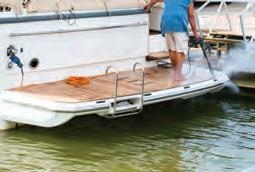











By A. deGruchy


The Florida Keys transform into a fishing paradise as the intense summer hurricane weather fades and cooler fronts begin to roll in. This fall, it’s all about the patch reefs... vibrant underwater gardens teeming with a variety of species. Targeting these patches is incredibly fun and rewarding. You’ll encounter species like snapper and grouper, along with various types of mackerels. Light-action fishing is always a blast,
and in the Keys, there are countless patch reefs to explore.
To find a patch reef, look for shallow spots scattered with coral and sand, typically just a few miles offshore at depths of typically between 1530 feet. For gear, we recommend using a PENN Spinfisher VII 3500-4500 combo. The Mustad 3/0 Demon circle hooks are reliable, and when it comes to bait, live shrimp are unbeatable. It’s all about enjoying the vibes and seeing what you can reel in... mutton snapper, red groupers, porgies, Spanish mackerels, and much more!


This fall will be even more special with the opening of Three Waters Resort in Islamorada. This elegant new destination offers not just stunning accommodations but also brand-new restaurants and a magnificent ambiance. Imagine savoring fresh culinary experiences while soaking up breathtaking waterfront views. After a day on the water, kick back and enjoy a drink at one of the resort’s dining venues or onsite restaurants.
So come on down this fall and get ready for some fun fishing in the Florida Keys. With Three Waters Resort as your home base and Bean Sportfishing Charters as your vessel, you’ll be hooked on the fishing, the food, and the laid-back vibes!






















By Capt. Jack Gohmert
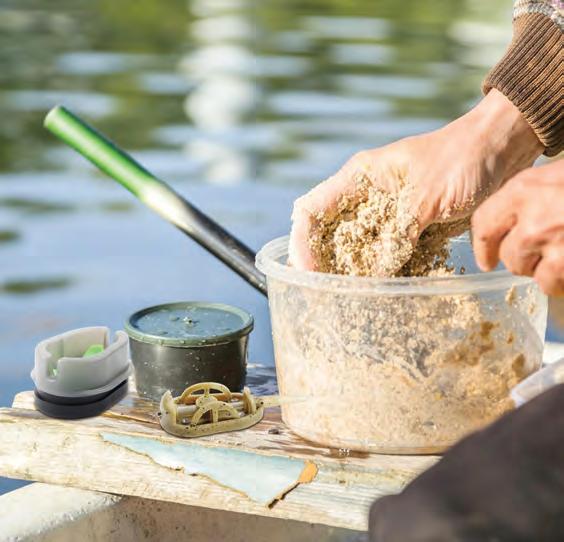
Creating your own chum bait can signifcantly boost your fshing success. Chum, a mixture of fsh parts and attractants, draws fsh to your spot by creating a feeding frenzy. Making your own chum lets you tailor it to the fsh you’re targeting and saves money. Here’s a simple guide to making efective chum and using it for the best results.
Chum is a blend of fsh-based materials that attract predatory fsh. When
placed in water, it forms a scent trail and visual signal that lures fsh like snapper, tuna, and sharks. Whether you fsh ofshore, from a pier, or inshore, chum helps by concentrating fsh around your location.
Making chum is straightforward. You’ll need the following:
Tools:
• Food processor or meat grinder
• Bucket or container
• Rubber gloves
• Freezer bags (for bulk storage)
Ingredients:
• Fish scraps (bait lefovers, carcasses)
• Canned fsh (sardines, mackerel, or tuna)
• Fish oil or menhaden oil
• Breadcrumbs or oats (to bulk up the mix)
• Optional: sand or cornmeal (to sink chum faster)
1. Gather Fish Scraps: Collect lefover fsh scraps or use canned fsh. Local fsh markets are great for sourcing discards.
2. Grind the Ingredients: Use a food processor to grind fsh scraps into a paste. For canned fsh, mash it along with the oil for a strong scent trail.
3. Add Bulk: Mix in breadcrumbs, oats, or cornmeal to bulk up the chum. Tese ingredients absorb oils and create a scent cloud. Sand can help sink the chum.
4. Enhance the Scent: Stir in fsh oil to intensify the scent, making it travel farther underwater.
5. Pack and Freeze: Freeze large batches in bags. When fshing, break of chunks and toss them into the water.
For ofshore fshing, throw small amounts of chum every few minutes to create a steady attractant. For shore or pier fshing, use a chum bag or cage to suspend and slowly release the chum. Adjust the size and consistency of your chum based on the fsh species. Larger fsh prefer coarse chum with chunks, while smaller fsh may respond better to a fne mix that creates a cloud.
Making your own chum is a cost-efective way to improve your fshing. With minimal tools and ingredients, you can craf a bait that attracts fsh and turns a slow day into a successful one.


By Terry D. Lacoss
The month of November finds both water and air temperatures cooling making conditions comfortable for fishermen and at the same time, increasing fishing action as well.
A full moon will arrive on Friday, November 15th flooding shallow flat marshes where redfish will benefit from the abundance of fiddler crabs and similar crustaceans. A well-known shallow flat can be found just southwest of the Shave Bridge where tailing redfish up to eight pounds can be targeted. Fly fishermen will need to beef up their flyfishing gear with eight weight fly rods, a floating fly line with a twentypound tippet attached on the business end of the leader. Crab patterns work best in the neutral, orange and brown colors, with red rubber legs. “Clouser Minnow pattern flies also work well in the Orange and chartreuse color patterns.

Once a tailing redfish is identified by its waging tail, wade within casting distance and place your fly inches of right in front of the it’s waging tail. As the fly descends into the red fish’s strike zone, watch your fly line closely for a slight jerk in the line, indicating the tailing redfish has just taken your fly.
When a redfish inhales your fly, while holding your fly rod tip close to the water making fast hard retrieves of your fly line, which will eventually result in a successful hookset. Once the hook is set raise your flyrod tip keeping your fly out of the water while fighting your hooked orange submarine!
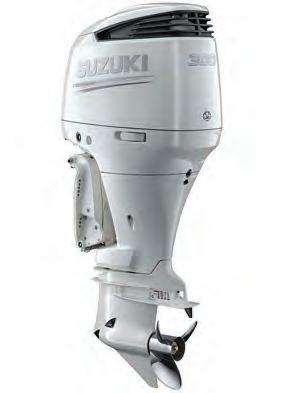
Redfish will also be active during the month of November during the last few hours of the falling and in-coming tides. Look for ambush points including oysterbars located at creek mouths, boat docks, and rock jetties. Floating a live shrimp just off from the bottom with a brightly colored float allows your live shrimp to drift right up to and past your targeted redfish ambush point.
Barbing a live shrimp through the tail with a quarter ounce led head jig while bouncing slowly along the bottom is also a productive Fall redfish tactic. Other popular redfish baits includes blue crabs, finger mullet, conch, and fiddler crabs. Also include small pieces of cut whiting, bluefish, and croaker.
Drifting a live shrimp under a float is also a deadly month of November fishing tactic for seatrout, flounder, bluefish and more. One of the more productive areas for this popular style of fishing during the month of November, is the inside of the St. Mary’s south jetty rocks. Anchor your fishing boat within casting distance of a low area in the rocks where a runout is created and enjoy fast floating live shrimp fishing action!
Cumberland Sound will offer excellent puppy drum fishing action while fishing dead on the bottom with ultra fresh local shrimp, or a quarter of a blue crab. Whiting action in these same waters is also excellent as well.
Beach fishermen will targeting redfish and seatrout at the southern portion of the beach during all of the incoming tide. Casting a chartreuse 52-M Mirr-o-lure works well, particularly for seatrout weighing to five pounds. Fishing with fresh local shrimp on the bottom works best for whiting, redfish and flounder.
Offshore fishing at FA, FC, FC, and Schultz’s Fish Market with fresh squid right on the bottom will produce excellent catches of black sea bass and the occasional grouper. Be sure and check with the latest fishing regulations at www.myfwc.com.
Good Luck!.
For more information and charters, call Amelia Angler Outfitters (904) 261-2870 or visit www.ameliaangler.com



By Capt. Kirk Waltz

The last months report was not included with any hurricane predictions and was not something that we expected. Hurricane’s hit us with a decent lick and affected the fishery somewhat for a couple of weeks which had already been dealing with over a week of Northeast winds and rain. The water is still pretty dirty but, we are starting to see it clear up slowly. The bull reds are still chewing really well and until the water temps really start to drop I don’t see that changing. They can be found from West of the Dames Point Bridge to the mouth of the St. John’s River. Try soaking fresh blue crab halves or quarters, cut or whole mullet, or any type of cut bait on the edges of deep water around the channel drops. Heavy tackle is preferred with these fish to avoid stressing them out and it’s pertinent to vent these beautiful breeders for survival. A failure to properly vent a bull red can on many occasions kill them. Good numbers of yellow-mouthed trout and croakers have begun to follow the large number of shrimp and small mullet migrating out with the huge tides we have had from the effects of Hurricane Milton. I look for this to continue thru the month. Hop around the river and the feeds into the ICW

both north and south for some decent numbers of these great fighters and good eating fish. I like a 1/4oz jig tipped with shrimp or even a light egg sinker rig with a small piece of shrimp attached. The high outgoing tides are preferred but, on occasion they can be caught on incoming high water. The speckled trout bite continues to slowly gain traction and get better as the water slightly cools and clears up. Decent numbers have been found from Blount Island to the big rocks at Mayport. I really prefer a float rig with live shrimp on a high outgoing tide but topwater plugs and soft plastic twitch baits can result in some decent catches. I like a Mirrorlure 52M and a gulp 3in swimming mullet in white or Dark with a green tail on a 1/4oz jig. Work around the areas docks, pilings, rocks, and oyster bars for best results. The big rocks at Mayport should start to give up good numbers of reds, trout, ringtails, sheepshead, and drum this month. Try fishing the high outgoing tides when you can with shrimp, fiddlers, cut crab, and mullet for good results. Float rigs, jigs, and Carolina rigs can be great ways to target these fish but be aware you will lose some tackle.
The offshore scene at the end of October was not too good as the results of all the rain and wind we had associated with Hurricane’s Debbie, Helene, and Milton. I do believe however that it will improve with some stable normal weather and provide us with some stellar action. Look for seabass, snapper, ringtails, and trigger fish to be around on the wrecks, reefs, and hard bottom spots. Fish fresh Boston mackerel, cigars, cuttlefish, and any live bait you can get on the bottom!
For more fishing tips listen to the Outdoorshow radio program on 1010am or 92.5fm every Saturday from 7am to 10am. He can be reached at 904.241.7560 or 904.626.1128 or go to www. enterprisefishingcharters.com



By Capt. Tony Bozzella

Justas most Anglers might think that fishing is getting slow and summer is over, November can be great for Redfish. The beginning of the month has some good tides reaching the 5.5 mark combined with healthy NE winds can bring some tailing redfish action. This will most likely be the last of that style of fishing for them as it also tapers with the cooler months. Many of the backcountry Oyster bars will hold a hatch of smaller fish. Many of the juveniles Redfish commonly known as “rats” have a big appetite. Often very cooperative Reds will slam a TBS Jig and bait combo with usually high number catches. Fun for kids, and anglers looking for fast action. The reds do not take long to hit if they are there. Fish an outgoing tide and be “intune” with your bait. No slack lines. Know what is happening and feel the jig on the bottom, when the “thump” hits, drop your tip allowing the fish to eat the bait and come tight, normally feeling the weight of the fish and set the hook hard. Shrimp, mud

minnows, mullet and crab are all great baits. Shrimp and crab are good choices because it allows you to pick up a black drum which normally do not take fish baits. The smaller black drum, 2-8 lbs, will be holding in many of the same areas. Black drum in the legal size make excellent table fare. Anglers will still be able to pick up a flounder as well, however, that bite will start to taper down as we get closer to the winter months. Trout will continue to be good with many fish heading to deeper holes and bends of creeks with many of the fish being undersize. Numbers can be high if you get into a school of them. Often a TBS jig rigged with a soft plastic in a brighter color has proved in the past to be a great choice of lure. Use an adequate amount of weight in your jig selection to reach and feel the bottom without overdoing it. Generally the lightest amount of weight you can get away with is usually the best. A jig and shrimp / mud minnow will be another good choice for the bait / float anglers. As far as the fun fish, bluefish will be holding on many points in sounds, Inter coastal Waterway, jetties and the river. They are not picky, mullet imitations, spoons, and jigs all work well. Use something you know how to use and you will have an excellent chance of success. Bluefish will hit just about every bait you can think of being very optimistic feeders. Until next time get out and enjoy what mother nature is allowing us to do at this time, there is usually something that is happening best!!!
Capt. Tony Bozzella / TBS JIGS
904 651 0182





By Capt. Tommy Derringer

Wateryou can find some big schools of tightly packed redfish. Locate these fish from a distance by looking for “muds” (discolored muddy water caused by moving fish) and/or pushing wakes made by moving fish. Redfish singles and doubles can also be found sunning themselves in the shallows, especially along side and on top of oyster bars. These fish will be lazy so make sure to present your bait in a slow and methodical manner. When I spot a stationary fish, I like to cast long of him and at least a few feet to either the left or right of the fish depending on which way he’s facing. Then work the bait slowly back to where the fish is (this will help to not spook the fish). Sometimes they will like it moving a little faster and sometimes a little slower. It’s always fun trying to find the right approach.
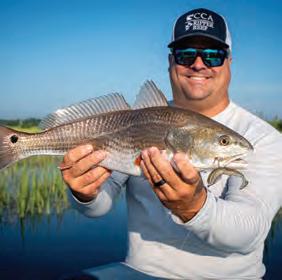
temperatures are starting to cool down but look for the inshore fishing to heat up. For me, the next few months are the most exciting time of year to target reds on the flats and creeks. As the water cools down it tends to clear up, making sight-fishing possible in some of our shallow flats (Even with all the rain we’ve had from tropical weather). November 2023 was epic, with plenty of schooled up reds in some sight-fishable water. Let’s hope we get some more of that soon! The creek fishing should start to fire up too... The redfish will push into the shallowest areas of the creeks on the low tides to warm up and feed on small minnows and shrimp. As things cool down this time of year, you’ll get to sleep in and wait for the sun to be out for a while to warm up the water. Clearer water can mean spookier fish, so downsize your baits/lures for a stealthier approach. On extreme low tides the redfish, trout and flounder will get schooled up in area creek holes. A live shrimp or mud minnow tossed into those holes using a 1/4oz Saltwater Assassin jighead can’t be beat. When up on the flats, look for darker mud and oysterladen bottom to be holding redfish, trout, and flounder. These areas will warm up faster than others on sunny days; a few degrees can really make a difference. Another benefit of dropping water temps is the redfish will start schooling on the flats over the next few months. If you know where to look
Trout fishing should turn on as it cools down as well. My favorite trout lure for this time of year is a Saltwater Assassin “Lil Boss” paddle tail in a natural color paired with a Saltwater Assassin 1/4oz jighead. The tail has a ton of thump and the trout just can’t resist it. The jig, jig, pause method works best for me. Target creek mouths, ICW banks, and any type of structure with moving water and you’ll be sure to find some trout hanging out.
Sheepshead fishing was pretty good through October and should only get better this month. Target area bridges, docks, and pilings with fiddler crabs to catch the tasty porgies. The black drum should start showing up in better numbers in the same places as well as in the creek holes on the lower tide stage..



















A City Dock: H: -:04 L: +:09 Bings Landing: H: +2:57 L: +2:44
02:28 AM 5.00 H 08:38 AM 1.02 L 03:04 PM 5.49 H 09:18 PM 0.78 L
11 Mon 03:32 AM 5.32 H 09:43 AM 0.77 L 04:05 PM 5.51 H 10:12 PM 0.42 L
12 Tue 04:32 AM 5.71 H 10:45 AM 0.44 L 05:03 PM 5.54 H 11:04 PM 0.06 L
13 Wed 05:28 AM 6.10 H 11:44 AM 0.09 L 05:58 PM 5.55 H 11:55 PM -0.26 L
14 Thu 06:21 AM 6.42 H 12:38 PM -0.20 L 06:50 PM 5.53 H
15 Fri 12:45 AM -0.49 L 07:12 AM 6.60 H 01:30 PM -0.37 L 07:41 PM 5.46 H
16 Sat 01:34 AM -0.58 L 08:03 AM 6.63 H 02:20 PM -0.37 L 08:31 PM 5.34 H 17 Sun 02:23 AM -0.53 L 08:53 AM 6.51 H 03:10 PM -0.20 L 09:21 PM 5.19 H
18 Mon 03:12 AM -0.34 L 09:45 AM 6.28 H 04:00 PM 0.09 L 10:11 PM 5.03 H
19 Tue 04:05 AM -0.03 L 10:36 AM 5.98 H 04:53 PM 0.43 L 11:03 PM 4.86 H
20 Wed 05:00 AM 0.33 L 11:29 AM 5.66 H 05:48 PM 0.75 L 11:56 PM 4.72 H
21 Thu 05:59 AM 0.69 L 12:22 PM 5.35 H 06:44 PM 0.98 L
22 Fri 12:53 AM 4.62 H 07:00 AM 1.01 L 01:17 PM 5.09 H 07:39 PM 1.11 L
23 Sat 01:52 AM 4.59 H 08:01 AM 1.23 L 02:13 PM 4.87 H 08:31 PM 1.15 L
24 Sun 02:54 AM 4.64 H 08:59 AM 1.35 L 03:09 PM 4.72 H 09:21 PM 1.12 L
25 Mon 03:51 AM 4.76 H 09:55 AM 1.36 L 04:03 PM 4.62 H 10:08 PM 1.03 L
26 Tue 04:42 AM 4.92 H 10:48 AM 1.26 L 04:54 PM 4.57 H 10:53 PM 0.92 L
27 Wed 05:27 AM 5.08 H 11:37 AM 1.08 L 05:41 PM 4.55 H 11:37 PM 0.78 L
28 Thu 06:08 AM 5.22 H 12:22 PM 0.86 L 06:24 PM 4.54 H
29 Fri 12:18 AM 0.64 L 06:47 AM 5.34 H 01:04 PM 0.65 L 07:05 PM 4.54 H
30 Sat 12:57 AM 0.51 L 07:25 AM 5.43 H 01:43 PM 0.51 L 07:45 PM 4.53 H





























ShoreStation hydraulic boat lifts are a reliable choice for coastal residents and boating enthusiasts alike. Their strong construction, made with corrosion-resistant materials, allows them to withstand harsh environmental conditions, including sun, storms, and saltwater damage. ShoreStation provides a steadfast solution for protecting waterfront investments, ofering peace of mind to owners in the Sunshine State.
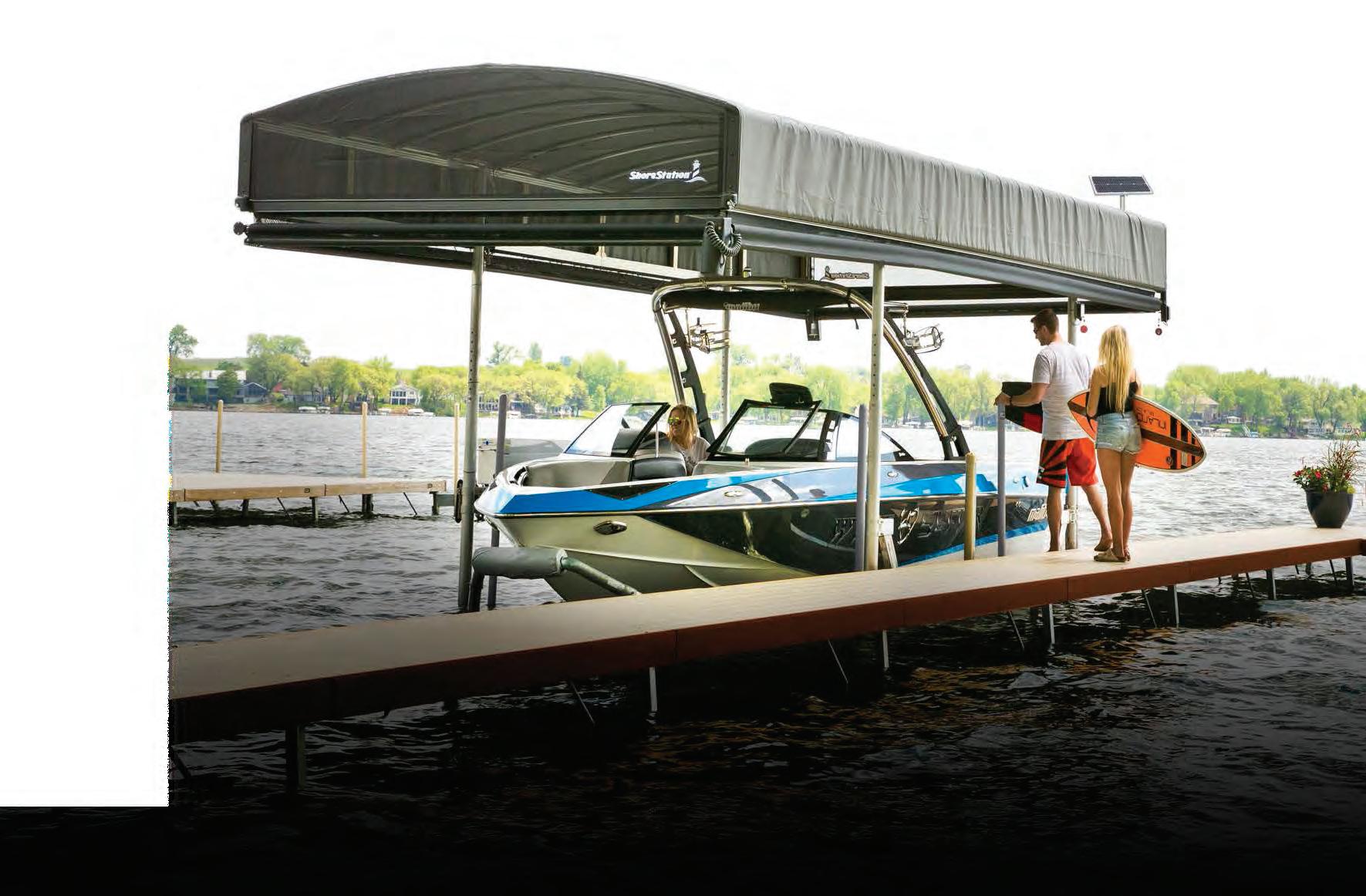







Equipped with exceptional weather resistant fabric and breathable SunTex 80 woven mesh ends for maximum protection and durability,

Made from the highest quality materials, our innovative hydraulic boat lift is one of the fastest and safest lifts on the market today. When you have a hydraulic lift, there’s no need to worry about wind and waves getting in your way. This lift will give you confdence to safely land and secure your boat in less-than-ideal conditions.
Never miss another moment on the water. Power your lift with clean, free solar power. Our speedy 20 watt charger features solar regulator drainage protection, saving your battery from permanent damage caused by overcharging.





















By Dr. Sal Benezo
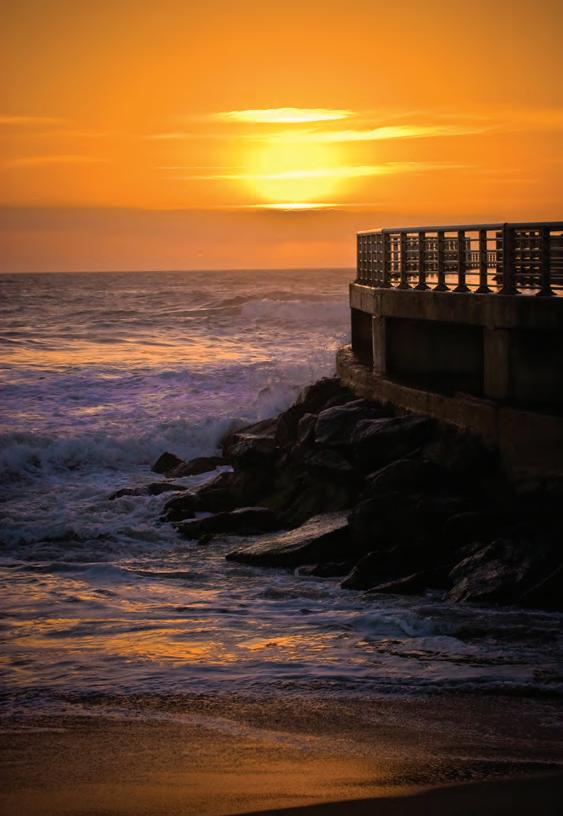





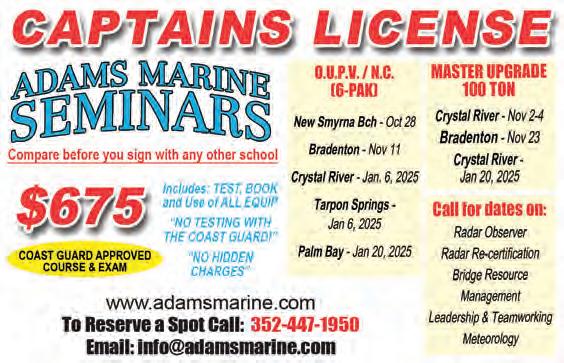
During a hurricane, fsh experience dramatic changes in their environment that can afect their behavior, habitat, and survival. As the atmospheric pressure drops with an approaching hurricane, the water pressure at diferent depths also changes. Fish have swim bladders that help regulate buoyancy, and the rapid changes in pressure can afect how they swim and maintain their depth. Some fsh may dive deeper to avoid the surface turmoil.
Hurricanes churn up sediment from the seabed, making the water murkier. Tis can reduce visibility, afecting how fsh fnd food and avoid predators. In coastal areas, this turbidity can also carry pollutants and toxins from land runof, negatively impacting the water quality.
Hurricanes generate powerful underwater currents and massive waves. Many fsh seek refuge in deeper waters, coral reefs, or underwater structures to avoid being swept away. Shallow-water fsh may struggle more to fnd shelter from the turbulence, which could lead to displacement or death.
Hurricanes ofen bring a rapid infux of fresh water from rain and runof, lowering the salinity of coastal waters. Some species, especially those adapted to certain salinity levels, may be stressed or forced to move to more stable areas. Additionally, the mixing of ocean layers can lead to changes in water temperature, which can afect fsh metabolism and spawning behaviors.
Te disturbance of the water column can disrupt oxygen levels, particularly in areas where organic matter from land washes into the ocean. Decomposing plant material can deplete oxygen in the water, creating hypoxic (low oxygen) zones, which can force fsh to fee or risk sufocation.
Fish, especially schooling species, may instinctively move to safer waters before or during a hurricane. Some species seem to sense the change in barometric pressure and migrate to deeper or more sheltered areas ahead of the storm. However, fsh that get caught in the turbulent water may end up displaced far from their usual habitat.
Afer a hurricane, habitats may be altered signifcantly. Coral reefs, seagrass beds, and mangroves—essential fsh habitats—can be damaged, leading to long-term impacts on fsh populations. However, hurricanes can also bring benefts, such as replenishing nutrients and oxygen in certain water bodies, which can stimulate plankton growth and temporarily improve food availability for fsh.
Fish have evolved to withstand many natural disturbances, including hurricanes, but the intensity and frequency of storms can have lasting efects on fsh populations, particularly for those in fragile ecosystems.

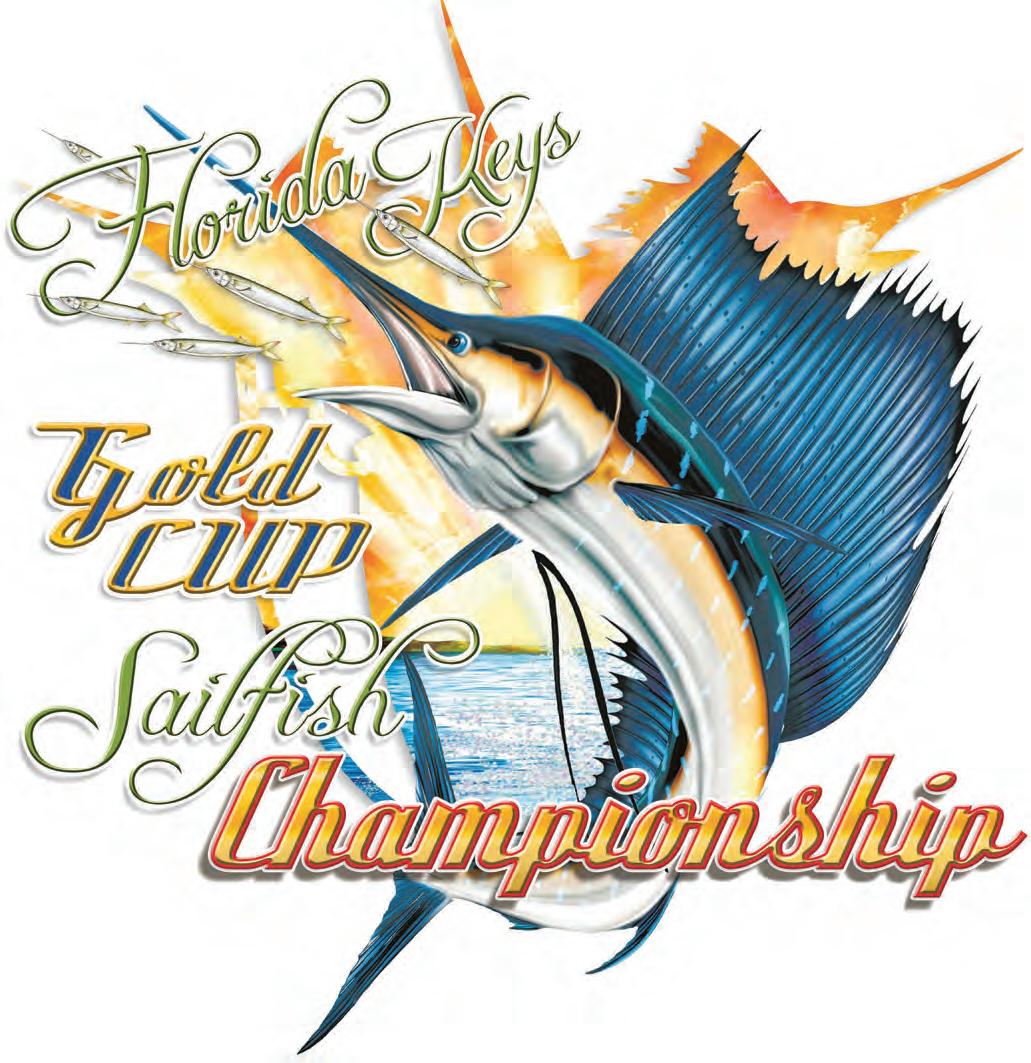

TRACY PATTERSON
Costa Rica is a renowned destination for anglers, ofering calm seas, ideal fshing conditions, and worldclass fshing. It is especially popular among female anglers due to its safety, tournaments, and supportive crews, making it an unforgettable experience.
If you’re seeking high odds of catching billfsh, Costa Rica is the place to be. On a full day ofshore, it’s common to get multiple strikes. Te fat, calm seas make it enjoyable for anglers of all levels, letting you focus on reeling in catches rather than battling rough waters.
Costa Rica hosts two ultra prestigious women-only tournaments: the Ladies Angler Tournament at Los Suenos Resort and Marina, and the Pescadora Billfsh Championship at Marina Pez Vela. Both tournaments create a supportive

yet competitive environment for anglers of all skill levels. Te Pescadora Championship is
particularly unique, ofering two Female Angler of the Year awards based on diferent fshing techniques. It encourages women to challenge themselves and grow in the sport.
Costa Rica is ranked #1 in Central America for safety, and recent laws further protect women from harassment. Female anglers can feel comfortable walking around resorts and marinas. Charter feets also adhere to strict safety regulations, ensuring peace of mind while on the water.

Whether you’re staying at a boutique hotel or a private home, Costa Rica ofers a range of accommodations for groups of all sizes. Many resorts are conveniently located near marinas, allowing easy access to fshing trips and other adventures.
Costa Rica is home to many women who support the lady angler movement. Te captains and crews are eager to teach beginners, helping them hook their frst billfsh or refne their skills. With women accounting for a growing percentage of anglers, Costa Rica ofers a welcoming and empowering environment for female anglers.
Whether you’re an experienced angler or a frst-timer, Costa Rica ofers an unbeatable fshing experience. Its exceptional conditions, tournaments, safety, and camaraderie make it the top destination for lady anglers.






IBy Capt. Michael Okruhlik
t’s that thrilling time of the year, founder time! Te fall migration, reaching its peak in November along the Gulf Coast, promises an exciting infux of founder to their spawning grounds. Louisiana, following Texas, has also implemented a closed season during this peak run. But remember, the inability to keep fatties during this time doesn’t dampen the thrill of catching them.
Flounder will be migrating into the Gulf during this time, so the apparent ambush areas will be around passes that lead to the Gulf. Te founder will position themselves in diferent regions based on the tide level and current strength. In addition to using their burying-in-the-sand ambush technique, they also utilize structure in several ways.
First, any object that protrudes above the bottom is a great ambush point. Tis ofers a current break for forage fsh to gather directly above a buried founder, making for an easy meal. Objects such as bulkheads are also great ambush points. Flounder like to position themselves against the solid barrier and I think this can be for two separate reasons depending on what other factors are at play. As mentioned above, it could be a current break, especially if the bulkhead has a corrugated shape. When a founder settles against a bulkhead, its prey has less direction in which it can fee, allowing the founder greater odds of capturing it. When targeting founder, never pass up a bulkhead.
Secondly, founder can be caught using a variety of lures and live bait, especially if you keep it in contact with the bottom to increase your chances of a strike. When it comes to live bait, a frisky mullet is your best bet for landing a larger founder. If you’re aiming for a trophy, this is the way to go. Personally, I prefer fshing with lures, particularly the paddle tail style. Jerk-style sof plastics and bucktails can also be efective when worked in the same manner.
If I had to pick a tide to maximize my time on the water, I would choose a medium fow outgoing. Although there are no set rules that fsh always follow, I feel the founder feed more on their way out to the gulf, utilizing

the current to ease their journey. Contrary to the incoming tide, they bury themselves rather than fght against the current.
Don’t let the closed season discourage you from targeting founder during this migration; it will have its advantages. Going forward we will undoubtedly have a larger founder population, but the instant gratifcation will be a lot less trafc in our favorite founder spot! I will use the closed season to target a new personal best this season, as should you.
Capt. Michael Okruhlik is the inventor of Knockin Tail Lures® and the owner of www.MyCoastOutdoors.com.











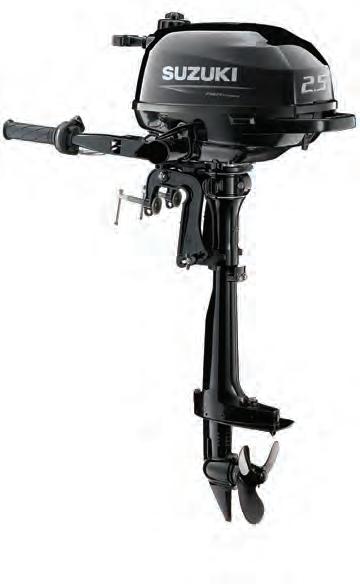








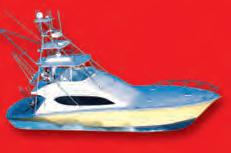


OTim Barefoot

f course, October is when it all starts, but if you like to bottom fsh, then November is the month the turbo kicks in, leading to the crescendo of the year… December. I’ve always said the week of Christmas is the apex of the grouper fshing calendar, and I’ll stand by that statement now. Tis is when larger (male) gags move inshore to establish their territory on inshore ledges, wrecks, and live bottom, much like buck deer making scrapes and rubs to mark their territory. Tese males now wait for the smaller females to show up in numbers to spawn, and the bite traditionally goes of the charts.
A small piece of hard bottom can attract large numbers of fsh if it contains the right ingredients. First and foremost, you need to locate their food. Go to the places that have traditionally held the bait—cigar minnows, sardines, beeliners, etc. “Find the bait, fnd the fsh” has been my thought process for years. Tese fsh won’t show up to a party without food—common sense. You can anchor up on a stack of bait without seeing a big mark of fsh, but afer a few bites, you’ll notice the screen light up with more and more fsh showing up.
Anchoring up is key to shallow water grouper fshing. Te sound of fsh feeding travels great distances and doesn’t go unnoticed. Once an area is fred up, constant bites supercharge the atmosphere down there. If you’re drifing, you won’t get a specifc area fred up; you’ll only go back where you got bites. But if you anchor, the fsh come to you to join in. Tis draws the alpha predators—big sharks. Yes, you’ll lose some fsh and tackle to these bruisers, but enjoy the ride while it lasts. When sharks show up, it’s time to move on to another ledge or further down the same one.

Back to noise... Keep in mind that while we hear very little, fsh hear everything. Sound travels far underwater, and everything you do on deck—slamming cooler lids, dropping hard objects, loud music, yelling—is heard by the fsh. It could be the diference between catching smaller cows or big bulls. Large male groupers didn’t get old by being dumb. You don’t kill big bucks by being noisy, so treat your fshing with the same respect.
Te folks that target grouper come home with grouper. Te ones who go “bottom fshing” with cut bait and chicken rigs come home with “bottom fsh.” As Franklin Covey said, “begin with the end in mind.” If you’re targeting grouper, think and act like it. Put baits on the bottom that avoid trash bites. Spend time jigging up some of that “trash” and drop them back down on a Decoy Jig for optimal results. Watch some of my videos on YouTube (Tim Barefoot) for examples of what I’m saying.
For more information, visit barefootcatsandtackle.com.





















You want AI Routing! Let TZ MAPS with AI Routing make route planning a snap. Don’t take our word for it. Scan here to see for yourself how easy it is!